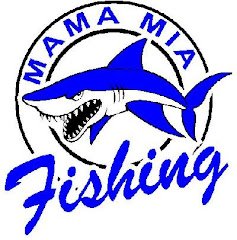About this time each winter I begin reading feverishly any materials related to the outdoors. Much of that has to do with the onset of seasonal affective disorder arising both from fewer hours of daylight and less time outdoors. I also spend more time at my tying vise adding to an already humungous inventory of flies. The reading and the tying both help alleviate the symptoms of fishing withdrawal. I was at the vise the other day looking through one of my many fly wallets and came upon a pattern that I originated for Alaska silver salmon about a dozen years back. It is a fly that has served me well on numerous salmon trips. The pattern has relevance to the local fishing scene since I modified it for use on striped bass. So I figured I would share the history and the tying pattern
When it comes to fly tying I take my inspiration however I can get it. I learned a long time ago that some of the best of tying ideas sometimes come from the most unusual sources. And so it was with the Alaska Margarita. I guess I must first admit to being a Parrot Head, a disciple of lord Jimmy Buffet. While reading the recipe for his sublime margarita concoction I got to thinking about all the tropical colors associated with the blend and instantly thought about how those colors might work in a fly design. The more I contemplated the design, the more I became convinced that coastal silver salmon would just go bonkers over a fly with those hues, tones and contrasts. When I finally got to try out the fly on some feisty silvers, I wasn’t at all disappointed. As it turned out, striped bass also love the pattern.
The most tantalizing effects of the fly result from the pulsating and undulating motion of marabou. The striper version incorporates the addition of a slender saddle hackle tail. That too adds seductive appeal. The bead chain eyes in the weighted version also allow for a jig-like motion to be achieved during the retrieve. That combined with the blended colors - proven over time to stimulate strikes from silver salmon - has led to an effective and dependable series of patterns. By varying the color combinations, the pattern becomes a very versatile fly for replicating a wide variety of bait, and for addressing different fishing conditions. Though I have not yet discovered all the secrets of the perfect margarita, the “margarita” and its variations come close to being some of the best patterns that I have used for tidal cohos and striped bass.
A weekly blog dedicated to fly-fishing the waters of Long Island and other world-class destinations.
About Me
- AP
- Following a long and fulfilling corporate career I moved on to pursue other interests as a full time outdoor journalist, book author, photographer and lecturer. I am also a strategic managment consultant involved in the outdoors, recreation and lesiure time industries. Fly fishing is my favorite pastime but I enjoy all forms of fishing and traditional outdoor activities. When I am not writing you will most often find me exploring my home waters of the Long Island Sound. I am equally as comfortable on a tidal creek in the wilderness of the Alaska Peninsula, or on a Gulf Coast flat or in the waters of a free flowing river. I love to wade, fish from a boat and kayak. If I couldn't fish, my life would not be complete. And should the day ever come when I no longer enjoy catching diminutive bluegill, I will part with all my gear and take up a new sport. Professional Affiliations: Outdoor Writers Association of America; New York State Outdoor Writers Association; Professional Outdoor Media Association; Association of Great Lakes Outdoor Writers. For further information please refer to my website at www.angelopeluso.com
Welcome and Enjoy
Welcome to AP's Fly Fishing Journal, a weekly blog dedicated to the pursuit of fly-fishing. Our focus will be the waters of Long Island and other world-class destinations. Whether you are a novice, intermediate or advanced fly angler, this space will be devoted to topics of interest and value to all who pursue game fish with the long wand. Topics covered will include fly-fishing commentary, fly tying, products and any and all issues relevant to today’s avid fly angler. If you are inclined to cast flies to fish , let this "journal" be your weekly guide to a rewarding time on the water. I will cover saltwater and freshwater, the beach and boating beats as well as the increasingly popular kayak fly-fishing scene. And we will look east and west, north and south - wherever fly anglers roam. I hope you enjoy my offerings. Thank you for stopping by.










